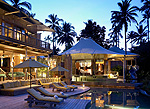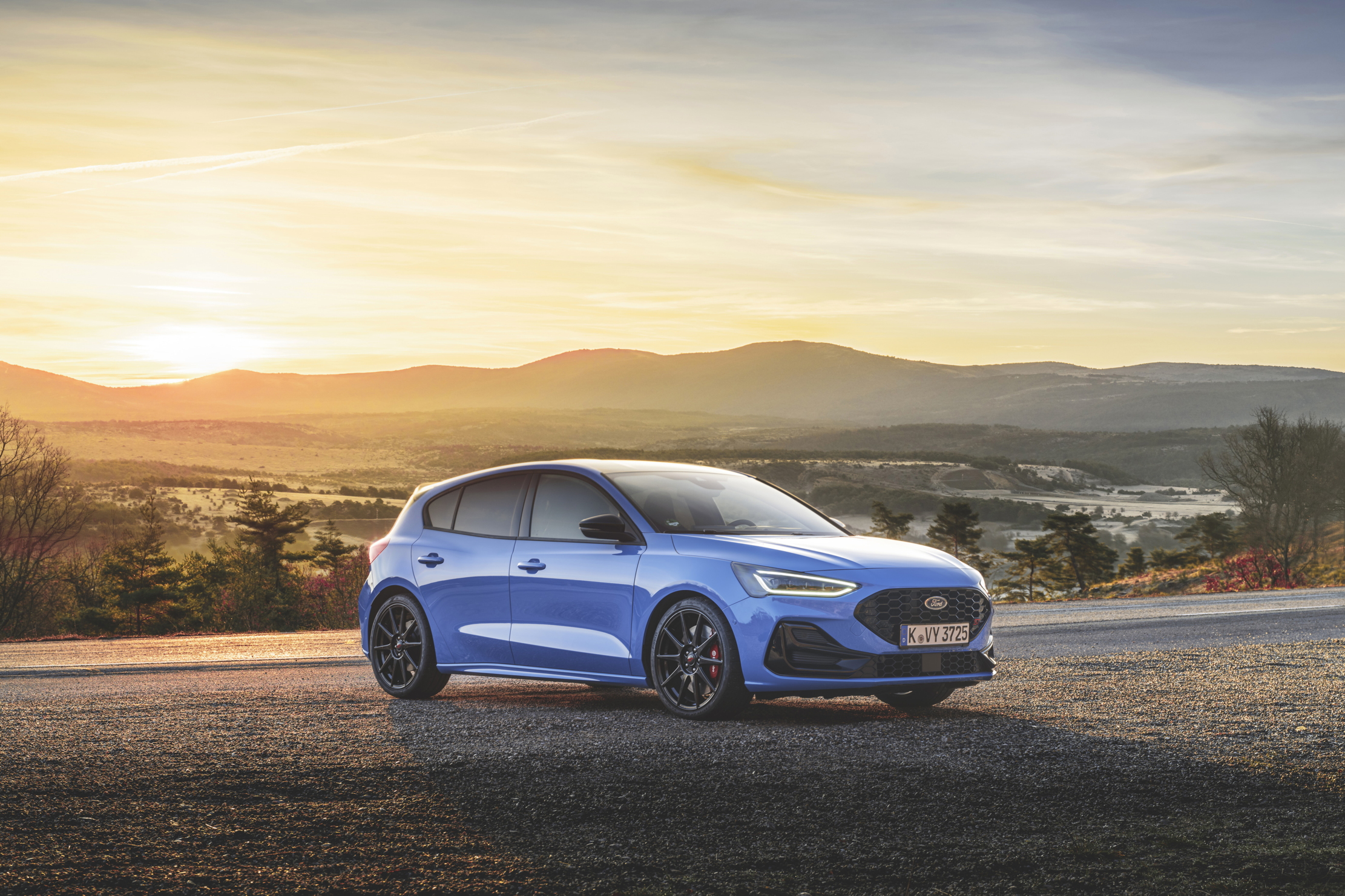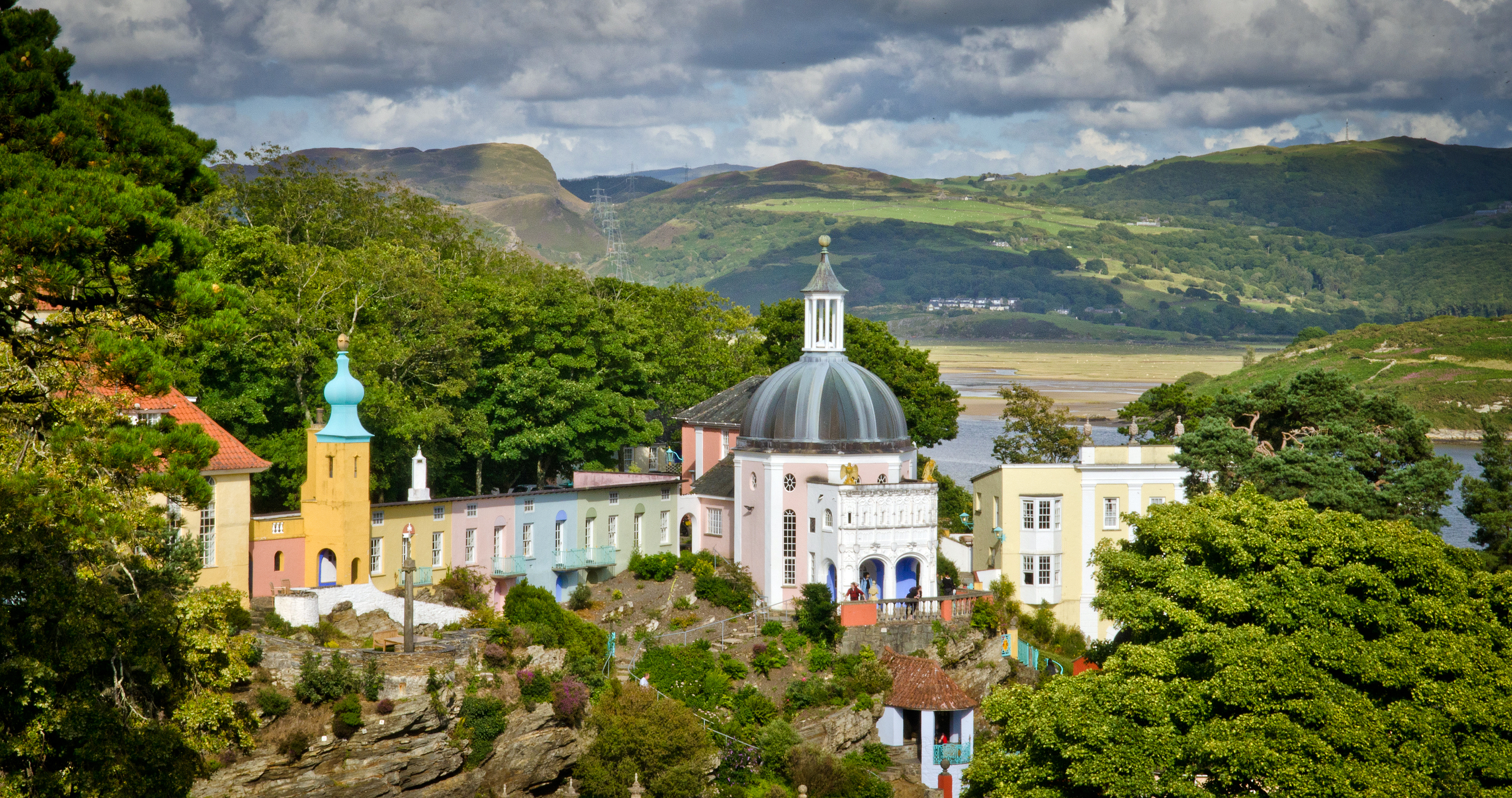Top 5 luxury eco developments
Dotted around some of the globe’s most glorious destinations are some eco-resorts that are leading the way in responsible development; Arabella Youens picks the top five


It’s an uncomfortable balance of ideals: to own an escape route to unadulterated bliss in the sun whenever the urge takes hold and the niggling awareness that resort developments have a nasty habit of destroying the natural environment around them. Not to mention, by flying to them you help to pump X-thousand cubic metres of carbon dioxide into the atmosphere We’re still some way off an eco-friendly property market, where buyers pin a property’s environmental footprint above its proximity to good schools and transport in their list of must-haves, mostly because either buying or owning newfangled eco-technology is still prohibitively expensive. However, particularly in the overseas second home market, there is a growing band of developers who are taking the decisions for you. This is happening not a bit too soon. In November 2007, National Geographic, along with George Washington University, published its fourth annual destination scorecard survey, reviewing conditions on 111 selected islands and archipelagos. In the bottom band of islands deemed to be ‘in serious trouble’ are some familiar winter sun destinations: St Thomas USV, Jamaica and Phuket. In short, islands blessed with tropical beaches which attract sun-and-sand resort tourism can are suffering from development overkill and a destruction of local culture. Enter the eco-resort. While a few years ago the term might have conjured up images of a rough-hewn community, settled by some ageing hippy, the concept has developed to an extent that, dotted round some of the world’s most glorious oceans, are stupendously luxurious developments whose impact on their surroundings is more of an imprint rather than a footprint. They can’t entirely salvage one’s eco-conscience but until somebody figures out a carbon neutral way of powering jet engines, this is a good place to start. Soneva Kiri, Thailand Old Etonian Sonu Shivdasani and his Swedish wife, Eva, are the brains behind the Six Senses group which has already attracted plenty of attention for promoting its no-holes-barred belief in eco-friendly resorts (including the slightly unprepossessing concept of ‘sand loos’) while sacrificing none of the pampering demanded by their well-heeled guests. So it goes without saying that if anyone is going to develop luxury eco-villas, they should be leading the way. ‘We Swedes are born green!’ cries Eva, from her base in Bangkok (although she yo-yos between there and the Maldives so much that Singapore Airlines is ‘home’). ‘My husband and I insisted on being eco and ethical from the start; 15 years ago it was very difficult to convince others of the need, now it is easier.’ For her, travelling and learning new languages is an absolute must: ‘But of course it’s terrible for the environment, so we do what we can to balance the damage.’ Her beady eye for detail ensures that few eco or ethical stones remain unturned in their resorts: from banning caviar from the kitchens to buying up old English telegraph poles for the villas. Their latest innovation is an underwater cooling system which aims to replace the need for air conditioning in rooms: ‘it’s a $1million experiment,’ says Sonu, ‘but we’re giving it a go.’ This year, their latest project opens on Thailand’s easternmost coast. Here they aim to replicate the success of their two ‘no news no shoes’ resorts in the Maldives where guests bask in a dreamy atmosphere of understated luxury: Robinson Crusoe-style paradise with five stars. The villas (which range from 4 to six bedrooms) will be virtually carbon-neutral, while catering to all needs and desires including yoga and massage pavilions, walk-in wine cellars and a tree house-style bedroom for the children. The designs are trademarks of Eva; velvet smooth wooden surfaces, humourous trunk style basin units, floor-to-ceiling windows that concertina open to take advantage of sea breezes and outdoor bathrooms. Transport around the resort will by golf carts and bicycles, the latter, in the sixth sense style of having solved a problem before a guest has thought about it, will have padded pedals to protect bare feet. Prices range from USD4.5m to USD7m with management costs of US$36,000pa (covering maintenance of villas and central areas). Joint agents: Cluttons Resorts (020 7584 3050; www.cluttonsresorts.com) and Aylesford International (020 7351 2383; www.aylesford.com) Les Salines, Mauritius Five years ago two Oxford graduates with a well developed affection Mauritius (they holidayed there as children) pounced on an initiative introduced by the Mauritian Government which opened up residency and property ownership to foreigners as long as they spend a minimum of USD 500,000. With a few to developing a high-end resort which was absolutely respectful of its magnificent surroundings, they chose a 400-acre site on the peninsular of Les Salines. Formerly a hunting estate belonging to a French-Mauritian family, its name derives from the saltpans which date from the early 19th century, and it rises from a bleached shoreline to a high point of 70m. ‘Before a single stone foundation was laid at Les Salines, the architect and development team walked around the terrain picking out which trees, plants and even rocky outcrops wouldn’t be touched,’ explains James Davies, International Director at Hamptons International. ‘This is an environmentally-sensitive development. Aside from recycling water and solar panelled heating, each villa sits an acre of gardens planted with endemic species will mean that they will blend into the scenery.’ Even transport around the resort will be by solar panel-operated golf carts. While Mauritius has a well-developed façade as a honeymooners’ destination in the UK, to South Africans it has long been both a holiday destination as well as place to house offshore accounts. ‘But those who haven’t been to the island don’t realise how multifaceted it is,’ explains Mr Davies. ‘It’s culturally diverse, has its own farming industry which negates the need to import food, has excellent hill walking and you can even surf on the south coast.’ Prices start from EUR 600,000 for a two bed ‘Golf Villa’ to EUR2m for a hillside villa. Contact: Hamptons International 020 7758 8447 www.hamptons-international.com or Knight Frank. 020 7629 8171 www.knightfrank.com or visit www.lessalines.com Kittitan Hill, St Kitts Kittitian Hills is ‘much more than a classic eco development; it’s beyond green’, explains the chairman of the developers, Valmiki Kempadoo. While it boasts the classic hallmarks of high-end ecological development, the endgame is to create an established community from which locals can benefit including training programmes covering farming techniques and the hospitality trade to computer literacy for the young and creative arts. ‘There are real social and cultural issues in the Caribbean and the time has come that we, as a people, need to take control of our development,’ says the Trinidad-born Mr Kempadoo. Embracing this twinned goal of developing high end villas and creating a community from which locals can benefit, Kittitian Hills will be made up of 100 villas, a boutique hotel and a centre for creative arts. ‘We’ll have a spa but you won’t find any Thai massages; we’re going to draw on the local vernacular to create a palette of indigenous treatments, using local ingredients,’ adds Mr Kempadoo. In another move to break down barriers, the restaurant in the resort will cater to both guests and staff to encourage interaction. ‘Kittitian Hills is the antithesis to the all-inclusive package holiday. We aim to attract people who are interesting in seeing the real Caribbean – not the one that’s shielded behind high security walls.’ The green programme (‘every resort should have one!’) includes an offsite windfarm with the aim to source 50% of the energy consumed from renewable sources. Each villa comes with an electric car packaged into the price. ‘This isn’t just window dressing: we’re aiming for a zero carbon footprint by 2020.’ Villas range from USD400,000 to USD950,000. Contact and further information: www.kittitianhill.com; telephone +1 869 466 1712 Domaine Royal Palm, Marrakesh, Morocco Despite annual hours of sunlight which most northern Europeans would dream about, it comes as rather a surprise that more enterprising Moroccans haven’t harnessed the eco-opportunities blessed upon them. Nevertheless, as this article went to press, Domaine Royal Palm is the only development in Morocco to use solar power. Marrakech has undergone something of mental cleansing in the minds of travellers in recent years. Once given a bit of a wide berth due to the harassment of female tourists, the efforts of King Mohammed VI’s to turn his country into a major tourism destination by 2010 coupled with the arrival of Easyjet has made the city an enchanting place to visit (although watch out for the hen and stag nights). It has also transformed into a second home destination: over the past 12 months, house prices have risen 15% and further growth is expected, fuelled by foreign investors. Developed by Robert Azoulay, a French-Moroccan who divides his time between Morocco and Paris, Domaine Royal Palm lies a few miles outside Marrakech, en route to the Atlas Mountains. ‘M Azoulay is passionate about respecting the terrain,’ says Bertie Sanderson of Erna Low Property. ‘All the villas are built using terracotta; the resort fencing is made of traditional rammed earth of dense shrub hedges and earth used for walls and plaster is taken directly from the site to ensure harmony between the colours of the buildings and the land.’ On an eco-level, the development which includes the usual accoutrements of swimming pools, a golf course, spa and tennis club as well as the 251 villas, tick many boxes. CO2 emissions will be negligible due to the use of solar energy, swimming pools will be treated with electrolysis or UV filters and the sanitation station works on an entirely biological system without any chemical adjuncts. Prices start from EUR700,000 for a 3-bedroom villa. Contact +44 020 7590 1624; www.ernalowproperty.co.uk Zil Pasyon, Seychelles ‘If you see this place, you would understand why you wouldn’t want to do anything to spoil it,’ says Tania Horoupian, of Zil Pasyon, a luxurious development of 28 ‘James Bond-style’ villas on Felicite Island, a private island in the Seychelles. Leading eco-architect, Richard Hywel-Evans, is responsible for the design of the Zil Pasyon villas. His aim is to create a new ‘stealth’ architecture that involves employing the area’s natural materials to camouflage the villas so that they remain unseen from the surrounding islands. Owners will have access to a helipad, personal butler service, and on-site property management as well as all the resort amenities. This is the first time that the resort owners, Per Aquum, are moving into the arena of home ownership. Their eco-conscience track record so far is commendable: from encouraging guests to offset the carbon costs of their flight and holiday, to appointing a marine biologist and working towards attaining the Green Globe certification. Property ownership rules on the Seychelles have just recently opened up to foreigners but the developers expect interest in Zil Pasyon to come from the UK, Ireland, France and Dubai. Villas will range from USD3m to USD12m. Contact: +800 3354 2483; www.zilpasyon.com And closer to Europe Gran Monóvar Mediterranean Eco Village (www.ecociudad.com) The first low-density eco village in Spain lies close to the city of Alicante and within 20 minutes of the nearest beaches. Virtually every aspect has been examined so that the development incorporates as many eco-friendly principles as possible: from the orientation of the houses to grey water recycling and solar panel driven hot water systems. Prices start at EUR 99,000 Desert Springs, Almeria After centuries of mining and fruit farming, a corner of Europe’s only official desert has been transformed into an ecological golf development. The Almanzora Bay group hired a world expert on cacti and succulents to landscape the fairways and work has gone into restoring the former fishing village at Villaricos, which despite its name (rich houses) had fallen on hard times since the collapse of the mining industry. Prices range from EUR150,000 to EUR1.45m Mata de Sesimbra, Lisbon, Portugal Less an eco-resort and more an ambitious experiment in sustainable living, the Mata de Sesimbra project outside Lisbon is designed to show how communities can eliminate pollution and rely on renewable energy, with zero carbon emissions and zero waste. The brainchild of a UK development group, BioRegional, the development aims to provide 50% of the community’s food from within 31 miles. Portugal is the fastest growing European country in wind energy. Le Cantarella, Villars, Switzerland A development of 20 three and five bedroom apartments in the village of Villars which have skiing on their doorstep. This is the first residential development in canton Vaud to engineer a system that recycles used water for the central heating of the properties. Prices from £434,000. Contact PURE International, tel 020 7331 4500; www.pureintl.com This article was published in Country Life International Spring 2008. * Search overseas property for sale
Sign up for the Country Life Newsletter
Exquisite houses, the beauty of Nature, and how to get the most from your life, straight to your inbox.
-
 Ford Focus ST: So long, and thanks for all the fun
Ford Focus ST: So long, and thanks for all the funFrom November, the Ford Focus will be no more. We say goodbye to the ultimate boy racer.
By Matthew MacConnell
-
 ‘If Portmeirion began life as an oddity, it has evolved into something of a phenomenon’: Celebrating a century of Britain’s most eccentric village
‘If Portmeirion began life as an oddity, it has evolved into something of a phenomenon’: Celebrating a century of Britain’s most eccentric villageA romantic experiment surrounded by the natural majesty of North Wales, Portmeirion began life as an oddity, but has evolved into an architectural phenomenon kept alive by dedication.
By Ben Lerwill